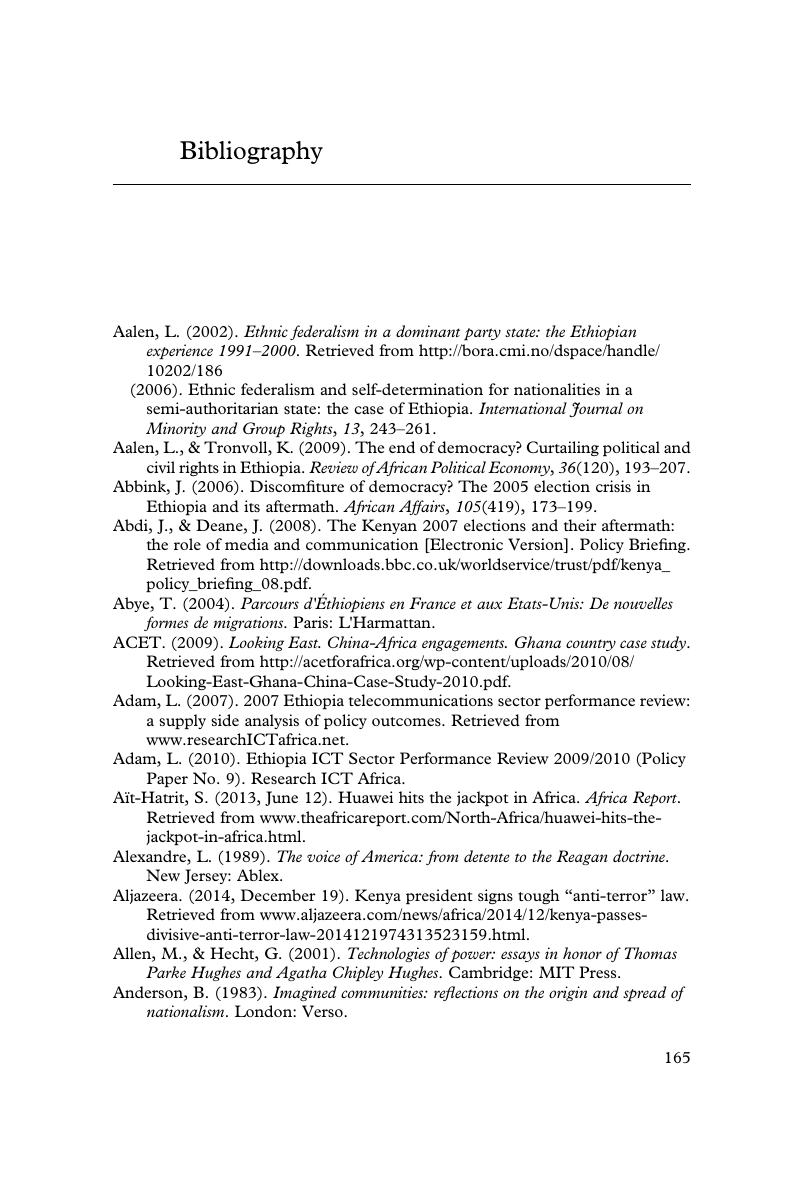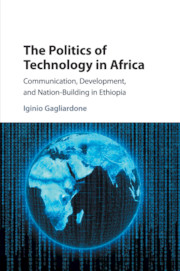Book contents
- The Politics of Technology in Africa
- The Politics of Technology in Africa
- Copyright page
- Dedication
- Contents
- Book part
- 1 Introduction
- 2 Technopolitics, Communication Technologies, and Development
- 3 Avoiding Politics
- 4 A Quest for Hegemony
- 5 Ethiopia’s Developmental and Sovereign Technopolitical Regimes
- 6 Resisting Alternative Technopolitical Regimes
- 7 ICT for Development, Human Rights, and the Changing Geopolitical Order
- 8 Conclusion
- Bibliography
- Index
- References
Bibliography
Published online by Cambridge University Press: 01 December 2016
- The Politics of Technology in Africa
- The Politics of Technology in Africa
- Copyright page
- Dedication
- Contents
- Book part
- 1 Introduction
- 2 Technopolitics, Communication Technologies, and Development
- 3 Avoiding Politics
- 4 A Quest for Hegemony
- 5 Ethiopia’s Developmental and Sovereign Technopolitical Regimes
- 6 Resisting Alternative Technopolitical Regimes
- 7 ICT for Development, Human Rights, and the Changing Geopolitical Order
- 8 Conclusion
- Bibliography
- Index
- References
Summary

- Type
- Chapter
- Information
- The Politics of Technology in AfricaCommunication, Development, and Nation-Building in Ethiopia, pp. 165 - 177Publisher: Cambridge University PressPrint publication year: 2016



